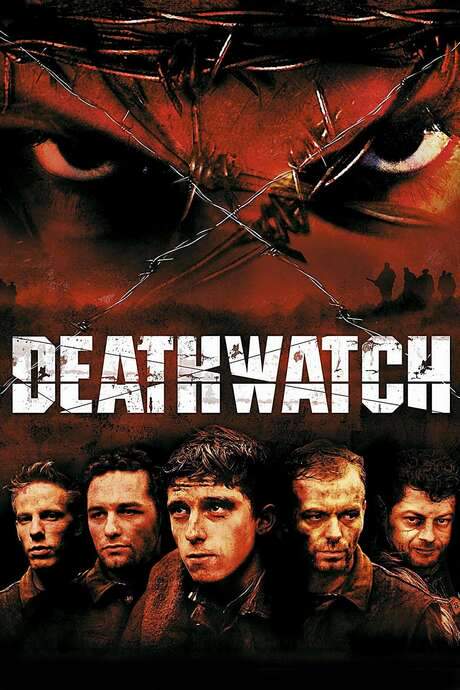
Deathwatch
Year: 2002
Runtime: 94 mins
Language: English
Director: M.J. Bassett
In WWI trench warfare a British infantry company cut off after a battle seeks to rejoin its lines and finds a bomb‑shattered German trench, except for a few dazed soldiers. After killing most Germans and taking a prisoner they hold the position awaiting reinforcements. Soon a presence spreads, sowing paranoia and turning the men against each other.
Warning: spoilers below!
Haven’t seen Deathwatch yet? This summary contains major spoilers. Bookmark the page, watch the movie, and come back for the full breakdown. If you're ready, scroll on and relive the story!
Timeline & Setting – Deathwatch (2002)
Explore the full timeline and setting of Deathwatch (2002). Follow every major event in chronological order and see how the environment shapes the story, characters, and dramatic tension.
Last Updated: October 04, 2025 at 11:58
Main Characters – Deathwatch (2002)
Meet the key characters of Deathwatch (2002), with detailed profiles, motivations, and roles in the plot. Understand their emotional journeys and what they reveal about the film’s deeper themes.
Last Updated: October 04, 2025 at 11:58
Major Themes – Deathwatch (2002)
Explore the central themes of Deathwatch (2002), from psychological, social, and emotional dimensions to philosophical messages. Understand what the film is really saying beneath the surface.
Last Updated: October 04, 2025 at 11:58
Explore Movie Threads
Discover curated groups of movies connected by mood, themes, and story style. Browse collections built around emotion, atmosphere, and narrative focus to easily find films that match what you feel like watching right now.
Claustrophobic isolation horror films like Deathwatch
Confined groups unraveling under the pressure of an unseen menace.If you liked the oppressive, paranoid atmosphere of Deathwatch, you'll find similar tension in these movies. This list features films where characters are trapped together, facing a menace that breeds suspicion and moral decay, much like the haunted trench warfare experience.
Narrative Summary
These narratives typically isolate a group in a single location—a bunker, a spaceship, a remote facility—where a mysterious force or event triggers paranoia. The plot focuses on the group's descent into chaos as trust evaporates and survival instincts override morality, often leading to a bleak outcome.
Why These Movies?
They are grouped by their shared focus on claustrophobic settings, high-tension paranoia, and the thematic exploration of how external pressure reveals the darkest aspects of human nature. The experience is defined by a steady, oppressive dread.
Supernatural war horror movies similar to Deathwatch
The horrors of combat amplified by an inexplicable, malevolent force.For viewers who enjoyed Deathwatch's blend of historical warfare with supernatural dread, this list collects films where the trauma of battle collides with otherworldly terror. These are stories asking if the true enemy is across no-man's-land or something far more ancient and sinister.
Narrative Summary
The narrative pattern follows soldiers already grappling with the visceral terror of combat who then encounter a supernatural phenomenon. This force often acts as a mirror, reflecting and amplifying the inherent violence and trauma of war, leading to a compounded sense of despair and futility.
Why These Movies?
These films share a core premise: war is hell, but something even worse can be waiting in the trenches. They combine the gritty realism of historical conflict with elements of the occult or paranormal, creating a unique subgenre of horror focused on the corruption of the human spirit in extreme conditions.
Unlock the Full Story of Deathwatch
Don't stop at just watching — explore Deathwatch in full detail. From the complete plot summary and scene-by-scene timeline to character breakdowns, thematic analysis, and a deep dive into the ending — every page helps you truly understand what Deathwatch is all about. Plus, discover what's next after the movie.
Deathwatch Summary
Read a complete plot summary of Deathwatch, including all key story points, character arcs, and turning points. This in-depth recap is ideal for understanding the narrative structure or reviewing what happened in the movie.

Deathwatch Timeline
Track the full timeline of Deathwatch with every major event arranged chronologically. Perfect for decoding non-linear storytelling, flashbacks, or parallel narratives with a clear scene-by-scene breakdown.

Deathwatch Spoiler-Free Summary
Get a quick, spoiler-free overview of Deathwatch that covers the main plot points and key details without revealing any major twists or spoilers. Perfect for those who want to know what to expect before diving in.

More About Deathwatch
Visit What's After the Movie to explore more about Deathwatch: box office results, cast and crew info, production details, post-credit scenes, and external links — all in one place for movie fans and researchers.

















